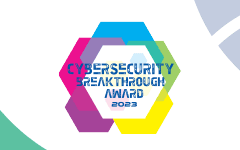Every day, organizations rely more on cloud-hosted technologies to drive efficiency, reduce costs, increase productivity, and shorten time-to-market for products to stay competitive. At the same time, they must also manage the on-premises elements of their infrastructures. In this evolving environment, new challenges to effective identity and access management have emerged. Organizations must address heightened concerns about using existing solutions to meet strict identity and access security requirements and stop security breaches.
As the identity entitlement and access management threat surface gets bigger, you need to ensure that your identity and access management system is ready to mitigate current and future risks. In this post, we’ll point out potential trouble spots with typical Identity Governance and Administration (IGA) solutions that may hamper your organization’s capacity to manage identity and access management (IAM or IDAM) effectively. We’ll explain why these trouble spots may present problems for your identity and access management system and provide some insights into the role IGA plays in eliminating them and future-proofing your IDAM strategy.
Why your current identity and access management system may not be sufficient
Today, most organizations enforce strong password policies to help manage digital identities and mitigate the risks of using authentication and authorization tools like single sign-on (SSO). They have adopted fundamental security hygiene practices such as multi-factor authentication (MFA) to manage user access. They have policies in place to shut down access privileges when they detect suspicious behavior and can generate the reports necessary to show compliance. While critically important to overall cybersecurity, these practices are not enough. Organizations must ensure that they can manage user identities and levels of access in a way that will result in improved security and truly optimized identity and access management.
To have a strong identity and access management system, IGA must be dynamic and reliable
In most organizations, some users have unnecessary access to systems and applications and/or overly permissive accounts. As the threat surface grows, organizations must ensure their identity lifecycle management house is in order, so they are prepared for next-level attack vectors. Insufficient identity lifecycle management is a significant concern for organizations still using legacy or house-built IGA because they often struggle to manage identity lifecycles in hybrid or SaaS-only environments, which limits the effectiveness of their identity and access management system overall.
Modern IGA deployed using a defined process framework enables organizations to manage access to resources across hybrid IT environments (on-premises and cloud-based applications). It facilitates audit and compliance reporting to ensure continuous risk overview, manages employee onboarding, role changes, and offboarding, performs access reviews and certifications across all cloud and on-premises applications, provides a structured approach to onboarding applications, manages access to applications on a granular level in compliance with established policies, and handles access assignment policies and provisioning. In addition to dramatically reducing identity-related cybersecurity risks, modern IGA can share the intelligence it gathers while managing these tasks with other IAM tools, like privileged access management (PAM) solutions. This helps make the identity and access management system much stronger.
Your current IGA solution must support your identity and access management system and keep pace with changing business needs
For organizations using legacy or in-house built IGA solutions, changes in business needs – everything from onboarding new applications to integrating identities from mergers and acquisitions – usually require custom coding to address risks in the expanded landscape. Customization projects are resource-intensive and rolling them out can break existing functionality which makes these projects even more costly and time-consuming and weaken an identity and access management system.
A modern IGA solution must ensure the continuous enforcement of identity and access management policies. An identity and access management policy example would be when a user enters login credentials, the identity is checked against a database to verify that the entered credentials match the ones stored in the database; like when a contributor logs into a content management system, they are allowed to post their work. Another example is role-based access control (RBAC) which enables organizations to assign access rights to new users with the same job roles and modify them over time to match new business requirements. A modern IGA executes identity lifecycle management, access management, security breach response, and compliance reporting without custom coding ensuring every user always has access to the right level of information at the right time; so employees, managers, and business system owners can devote their efforts to other value-adding work.
The organization must have a centralized view of all IDAM software in the identity and access management system
The advantages gained by using individual identity and access management solutions (e.g., IGA, PAM, CIEM, DAG, ITDR, etc.) are well understood. Unfortunately, it is difficult for organizations to share the information that these IAM tools gather so they are not getting as much value from them or their identity and access management system as they could be. Some organizations deploy a single product that offers all IAM tools to overcome this challenge. This is a good approach in theory, but in reality, many of the tools the single vendor provides are technologically inferior. Also, “all in one” IDAM solutions don’t integrate with individual best-of-breed solutions or easily connect with intelligence enhancement tools like AI in identity and access management, so they are not creating an optimal identity and access management system.
Governance for Identity Fabric enables organizations to have centralized management of their IAM solution and share data between them so you can build more intelligence into the process, make smarter decisions throughout the identity management lifecycle, and create a better identity and access management system. Achieving a 360-degree view of all identities and access rights across hybrid systems and applications and knowing users have the correct access ensures your organization is in compliance with policies and regulations and provides an unprecedented level of control. Enabling this level of identity entitlement and access management at scale minimizes risks by automatically identifying orphan or inactive accounts that could be misused for attacks and ensuring no digital identities are left behind as systems and applications are added to or removed from the infrastructure.
Your IGA must be configurable to other elements in the identity and access management system
In today’s growing identity and access management threat landscape, adaptability, and connectivity are two of the most valued characteristics in IGA solutions. These characteristics are driven by an organization’s ability to configure its IGA solution to work with all applications and systems, IAM solutions, and tools that enhance the effectiveness of an identity and access management system (e.g., AI in identity and access management, machine learning, etc.) in all environments. Legacy IGA systems cannot be configured in this way and there are clear limitations to their ability to connect to new applications and tools.
Your IGA solution must be configurable to integrate with other architectures, identity frameworks, and identity source systems. With no customization required, modern Identity Governance reduces technological complexities and extends identity governance to any application, including third-party applications and mobile devices to create a frictionless identity and access management system. Centralized management and governance unify information from all IAM tools through bi-directional context exchange. This improves visibility into risks, makes compliance reporting easier, and creates the identity-first security posture that can satisfy stricter privacy and IAM requirements.
While no entity can predict the future, sticking with an outmoded identity and access management system out of organizational inertia or to avoid upsetting the status quo will lead to increasingly inefficient processes that will neither meet future compliance requirements nor provide the business agility organizations need to compete. To future-proof your identity and access management system, use the intelligence improvements an Identity Governance solution provides to automate decisions and enable zero-trust initiatives. IGA is a critical part of an overall access management solution. Deploying a modern IGA in a defined best practices framework as the centerpiece of an Identity Fabric enables you to optimize your identity management system today and for the future as well as get more value from every tool in your stack.
On your journey to future-proofing your identity and access management system, Omada can help you avoid trying to “boil the ocean” by identifying where you can quickly create and demonstrate the value of modernizing your IGA system without unnecessary resource expenditure and without risking poor adoption within the organization.
Learn more about Omada’s best practice process framework for rolling out a successful IGA deployment so you don’t need to ‘reinvent the wheel’.

























